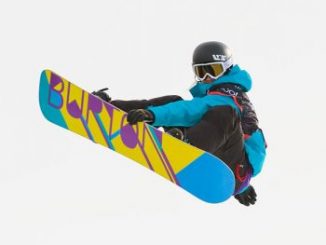Rick Maese, Washington Post
The U.S. Olympic Committee says it’s taking its most diverse team ever to a Winter Games, an impressive and deserved boast that requires a caveat of sorts.
Yes, USOC officials are pleased the team includes more African Americans and Asian Americans — and even the first two openly gay men — than recent winter squads. But they also realize this year’s U.S. Olympic team, not unlike those of most other nations gathering in PyeongChang this week, is still overwhelmingly white.
“We’re not quite where we want to be,” said Jason Thompson, the USOC’s director of diversity and inclusion. “… I think full-on inclusion has always been a priority of Team USA. I think everybody’s always felt it should represent every American.”
Team USA numbers 243 athletes, which is the largest team any nation has sent to a Winter Olympics. Of that group, 10 are African American — 4 percent — and another 10 are Asian American. The rest, by and large, are white. The Winter Games contingent is typically much smaller than its summer counterpart, but the demographic differences are striking. The United States took more than 550 athletes to the 2016 Summer Games in Rio de Janeiro. Of that group, more than 125 were African American — about 23 percent.
This year’s winter squad includes the first black long-track speedskater — Erin Jackson, who transitioned to the spot from inline skating — as well as the first black hockey player, Jordan Greenway, and first black short-track speedskater, 18-year-old Maame Biney, who moved from Ghana to the Washington area when she was 5 years old.
{snip}
Asian Americans have seven spots on the figure skating team, two in speedskating and another in snowboarding, and five of the American bobsledders competing PyeongChang are African American.
The lack of diversity on the winter teams is certainly not a new issue, and it’s not unique to the United States. But the USOC has identified it as an area for targeted growth. Thompson was hired to his post in 2012, shortly after the job was created, because the USOC saw room for improvement at every level: from athletes and coaches to the officials who run the national governing bodies for each sport and executives who work for the USOC.
“Since that point, we’ve just been trying to find ways to make sure our team looks like America,” he said.
The Ted Stevens Act requires each sport’s governing body and the USOC to send a report to both Congress and the president every four years that, among other things, details participation of minorities, women and people with disabilities. In a step toward even more transparency, the USOC now requires each sport’s governing body to submit a diversity scorecard each year. While the reports include benchmarks and goals, the results offer statistical snapshots of each sport, and especially for the winter offerings, underscore the areas that are lacking.
{snip}
Many winter sports also come with a heavy cost. Competitors can’t simply roll a ball onto a field or lace up a pair of running shoes. There’s winter gear, lift tickets, ice time, specialized equipment, coaching, travel.
{snip}
A handful of grass-roots programs across the country try to make winter sports more accessible — perhaps with free ice time to P.E. classes during the school day, transportation to ski lifts or ice rinks, donated equipment and free instruction.
{snip}
Bobsledding has become the most diverse American winter team by carefully selecting its elite competitors. USA Bobsledding actively recruits from other sports, which means its ranks are filled with athletes who have excelled in sports such as track and field or football.
{snip}
While the USOC is happy to celebrate the makeup of its PyeongChang-bound Olympic team, it knows even bigger strides can be made over the next four years.
{snip}
